|
BY JAYNE ATHERTON
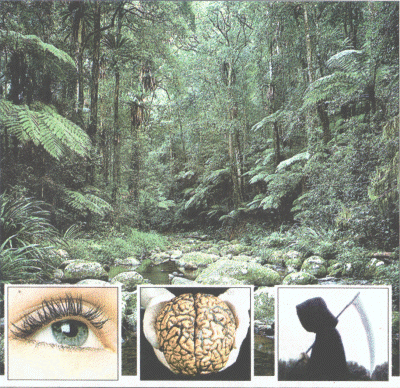
IT MAY not rank among most people's favourite things but death
has made it into a list of nature's greatest hits.
Scientists have chosen the definitive top ten of nature's
creations ranging from the eye to the brain, for the New
Scientist magazine.
Top of the list is multicellularity: a trick of DNA
which allows different cells to specialise in specific tasks.
Without it, complex creatures
-including people -could not exist.
The eye, in second place, first appeared 543million years ago,
when trilobites first gazed upon the world.
The brain, which is credited with lifting us
'above the level of vegetation' comes next, with photosynthesis,
the process which allows organisms to turn sunlight into fuel,
in fourth place.
Language comes next, followed by sex,
which, in scientific terms, is a waste of time and energy.
Thankfully, nature is not such a kill-joy - and anyway, sexual
reproduction allows for genetic variation and evolution.
Also in the list are symbiosis, which allows two species to live
off one another, parasites, ranging from viruses to mosquitoes,
and superorganisms, such as the Portuguese man-of-war.
Finally there's the Grim Reaper himself.Death
allows cells to self-destruct so the body can develop and
regenerate itself.And one theory suggests an in-built
ageing programme sets an upper limit on our
lifespans, ensuring we do not outstay our welcome.
[Metro Apr11,2005]
|
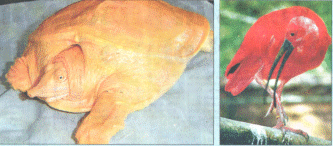
|
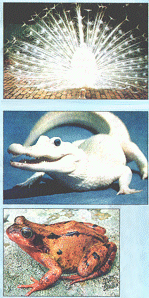 |
|
By
Suzy Austin
It may
look like it has been Tangoed,but this turtle's
unusual colour is down to a strange twist
of nature.
The soft-shelled turtle - which would be
brownish green or tan under normal
circumstances - was found in Yangzhou,China.
Scientists believe the female turtle is bright
orange thanks to a gene
deformity.The turtle is certainly not the
first animal to sport unusual colour
through mutation.
Gene abnormalities occasionally also create
albinos,which lack pigment and have white
skin and hair.
Other colour mutations include a striking scarlet
ibis,more commonly black and white. And one
family believed they had stumbled upon an
exotic species when they found a
strangely-coloured frog in their garden pond
in a South Yorkshire village.
It was only when they took
it to an expert that they found it
was a common garden frog
with a colourful gene thrown in. [Metro
Apr20,2005].
|
Tale Gator: The albino
alligator pictured on Wednesday is not an albino. The
trait is, in fact,leucistic.If it had been
an albino,the pattern in its skin would have been
present, as well as the characteristic
pink eyes.Leucistic animals are not albino and
should not be confused with such.The peacock
that appears in the article is also leucistic.
Joe Killick,Huddersfield. [Metro Apr21,2005]
'Hobbits' ruled paradise isle
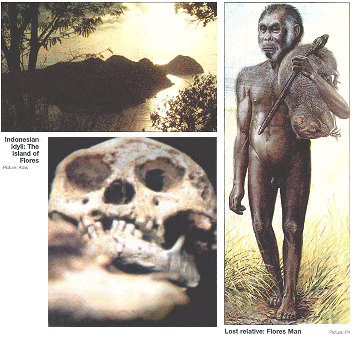
BY SARAH HILLS
THEY were barely 1m tall, round-faced and
hollow-eyed - creatures eerily rerniniscent of Tolkien's hobbits
from The Lord of The Rings. But these were not intelligent,
gentle, pipe-smoking denizens of Middle Earth.
They were tiny humans, who, despite having brains
a quarter the size of modern man, used stone tools and hunted.
Scientists who uncovered their remains, hailed it
one of the most spectacular fossil finds in decades. Fragments
from the primitive individuals, who lived until 12,000 years
ago, were found on the Indonesian island of Flores. They
inhabited a kind of tropical lost world, populated by giant
lizards and miniature elephants. Radiocarbon dating revealed
some specimens to be 95,000 years old. One l8,000 year-old
skeleton, of an adult female, was found near stone tools and
charred animal bones, suggesting she cooked.
Experts believe Flores Man descended from the
full-sized forebears of modern hurnans. Australian experts who
found the creatures told the journal Nature
they shrank over the years, in part, because they did not need
to remain tall to tackle natural predators. Prof Bert Roberts,
of Wollongong University, said: 'We now have the remains of at
least seven hobbit-sized individuals at the cave site, so the
skeleton cannot be some kind of freak.'
[Metro Oct28,2005]
The Riddle of The Human Hobbits: An Equinox
Special
Delving into the science behind last year's
tabloid frenzy, The Riddle of The Human Hobbits began,
in true 'ooooh- Secrecy- Lost world! Genetic conspiracy" style
with boffins stalking purposefully down shadowy, X Files-lit
corridors to click open a Spy-Catcher metal briefcase. Despite
my immense disappointment that the metal briefcase did not
reveal a tiny lost tribe of woolly-toed folk, chanting
'riddle-me-ree' and blowing smoke rings, but a small,
mouldy-looking skull from Indonesia, this mind-blowing, 'wow -
world of wonder!' doc was still hugely absorbing and great fun.
Much of the fun was due to Prof Bert Roberts, one of the
original Aussie archaeologists who unearthed Flo, the hobbit
lady whose diminutive metre-high stature and titchy brain proved
evolution-busting evidence of an entire new species. A
kind of cheery Wollongong University version of Michael Palin,
Bert was happy to give us facts in a way we understood,
clarifying the importance of the find while proving his
professionalism by the ability to say 'homo erectus' repeatedly
without giggling like a schoolboy.
[Metro May3,2005]
Until very recently, evolutionary thought was
couched in terms of a linear, progressive trajectory rising from
lower life forms and culminating in man. I have argued elsewhere
that this view is not, regrettably, as extinct as it should be.
In palaeoanthropology, this idea is seen in the
view that only one species of hominid has existed at any one
time, each one succeeding the next in a scheme of orderly
replacement. This idea began to crumble in the 1970s, since when
discoveries of ancient relatives of humans have revealed a
marked diversity of form. Human evolution is like a bush, not a
ladder.
But these discoveries concerned the more remote
reaches of human ancestry. Despite the fact that some of our
relatives, such as Neanderthal man and Homo erectus, are thought
to have become extinct in relatively recent times, our
complacency that this view holds for recent history has not been
shaken.
Until now. If it turns out that the diversity of
human beings was always high, remained high until very recently
and might not be entirely extinguished, we are entitled to
question the security of some of our deepest beliefs. Will
the real image of God please stand up?
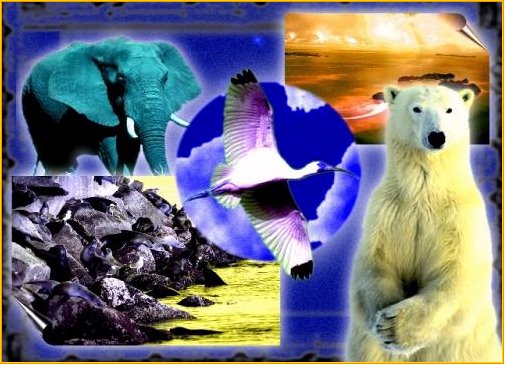
|
